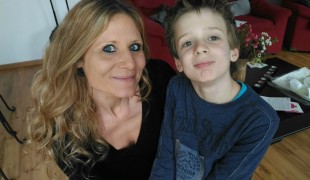- 12083
- 641
- 12
- 12
- 0
- Help Ukraine
About the solution
Tom, born in 1994, suffers from this disease since he was born. This patient can experience up to 24 epileptic seizures a day, often while he sleeps, and he has learning dificultes due to his condition.
Tom’s family was always worried about the seizures he has while he’s asleep. The device they had to keep him monitored was not very effective, and failed to detect every seizure.
That’s why Adrian and Chris team up, and founded their own company – Adris Technologies - developing PulseGuard, a wearable sensor worn by epilepsy patients that transmits the heart rate readings to an iPhone app. The invention works by shining a light through the skin, with a sensor detecting blood flow and recording accurately heart rate reading. When heart rate rises significantly, which happens before a fit, an alarm is sounded on a smartphone or iPad, meaning that people can reach out to the patient earlier.
“Every parent with an epileptic child with symptoms like Tom’s will know that life can be very stressful and a constant worry, especially from very disturbed and sleepless nights. We are therefore delighted to be able to try and help many other families using our experience and research by making our invention available to them", explained Tom’s father.
After getting the idea, the duo started emailing experts to get some help building the app. A neuro-scientist replied, and helped them for free.
It took the team two years to create the product and to make clinical trials.
More info: https://www.pulseguard.org/
Adapted from: http://bit.ly/2jX9GO7
What about you, do you have any solutions? Please share them with the Patient Innovation community!
这些解决方案不应包括使用药物,化学品或生物制品(包括食品);创伤性设备;冒犯性的,商业或内在危险的内容。该解决方案未经医学验证。请谨慎进行!如果您有任何疑问,请咨询健康专家。
DISCLAIMER: This story was written by someone who is not the author of the solution, therefore please be advised that, although it was written with the utmost respect for the innovation and the innovator, there can be some incorrect statements. If you find any errors please contact the patient Innovation team via info@patient-innovation.com
-
-
246
-
0
-
3002

Richard Hanbury creates Sana Relief - a device to recovery from fatigue.
CAREGIVING
SLEEP FUNCTION: Resting
Neuromuscular Disorders
5 Senses support devices: (glasses, hearing aids, headphones...)
App (Including when connected with wearable)
Managing pain
Enhancing health literacy
Promoting self-management
Managing Neurological Disorders
Recovering from Traumatic Injuries
Enhancing Mental Health
Preventing (Vaccination, Protection, Falls, Research/Mapping)
Raise awareness
Caregiving Support
Child and Adolescent Psychiatry
General and Family Medicine
Neurology
Pediatrics
Physical Medicine and Rehabilitation
Psychiatry
United States
-
-
-
759
-
0
-
17003

Proloquo2Go – App to help people communicate
CAREGIVING
COMMUNICATION: Communicating, whether by speaking, listening, or other means
Social interaction
Paralysis
Autism
Cerebral Palsy
Brain Stroke
Brain Injury (Abscess, Brain Barrier Defect, Brain Contusion, Brain Hemorrhage, Brain Edema)
Assistive Daily Life Device (to help ADL)
Assistive Technology access
App (Including when connected with wearable)
Tremors
Muscle cramps or spasms
Difficulty coordinating movements
Muscle weakness
Difficulty speaking or understanding speech
Trouble with fine motor skills (e.g., writing, buttoning clothes)
Twitching or involuntary movements (myoclonus)
Acquired language impairment (Aphasia)
Promoting self-management
Managing Neurological Disorders
Building Supportive Community Relationships
Promoting inclusivity and social integration
Improving Speech and Communication
Caregiving Support
Clinical Pathology
Medical Genetics
Neurology
Pediatrics
Rheumatology
Netherlands
-
-
-
454
-
0
-
6552

WatcHelp: Mom invents an app to increase the autonomy of her autistic son in the everyday life
COMMUNICATION: Communicating, whether by speaking, listening, or other means
CAREGIVING
Autism
Asperger's Syndrome
Alzheimer's Disease
Down Syndrome (Trisomy 21)
ADHD
App (Including when connected with wearable)
Anxiety
Gait abnormalities (e.g., walking difficulties, unsteady gait)
Difficulty concentrating or making decisions
Tremors
Muscle cramps or spasms
Difficulty coordinating movements
Stiffness or rigidity (difficulty moving)
Muscle weakness
Social withdrawal or isolation
Difficulty speaking or understanding speech
Cognitive impairment
Memory loss
Restlessness or feeling slowed down
Sleep disturbances
Difficulty controlling impulses
Hallucinations (perceiving things that aren't there)
Fatigue
Managing Neurological Disorders
Enhancing Mental Health
Caregiving Support
Child and Adolescent Psychiatry
General and Family Medicine
Medical Genetics
Neurology
Pediatrics
Psychiatry
France
-
 zh
zh